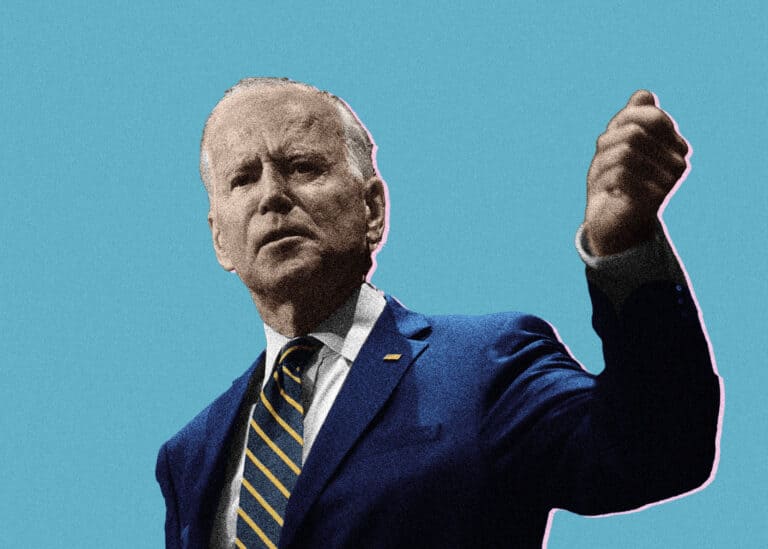
Mike Klain is a student at Harvard Law School and a member of the Labor and Employment Lab.
This July, President Biden signed a sweeping Executive Order that contained a multi-pronged approach to promoting corporate competition. Notably, the order included several elements targeting the impacts of consolidation on workers, such as a directive to the FTC that antitrust enforcement focus in particular on labor markets, a directive for the FTC to take steps to limit non-compete agreements, and a directive for the FTC to reduce unfair occupational licensing requirements.
Recent academic literature supports the Biden administration’s focus on consolidation as a potential source of harm to workers. A 2018 paper by Jose Azar, Ioana Elena Marinescu, Marshall Steinbaum, and Bledi Taska analyzed the level of concentration in Untied States labor markets using the preferred metric for Department of Justice and Federal Trade Commission review – the Herfindahl-Hirschman Index. According to their research, 60% of labor markets accounting for 20% of total employment would be classified as “highly concentrated” under DOJ and FTC guidelines.
Several studies have found that this concentration in labor markets causes direct harm to workers. A 2017 paper from Azar, Marinescu, and Steinbaum found a statistically significant relationship between labor market concentration and wages. According to their research, “going from the 25th percentile to the 75th percentile in concentration is associated with a 17% decline in posted wages, suggesting that concentration increases labor market power.” A 2018 paper by Josh Bivens, Lawrence Mishel, and John Schmitt corroborated these findings. The authors concluded that labor market concentration reduced wage growth by an estimated 0.03 percent annually between 1979 and 2014 – a modest but compounding effect over time. Finally, Efraim Benmelech, Nittai Bergman, and Hyunseob Kim in 2018 analyzed the impact of labor market concentration on the manufacturing sector. The authors found not only that higher levels of concentration were associated with lower levels of wages, but also that the negative relationship was even stronger where unionization rates were low.
Now, the Biden administration is taking steps to prevent even further consolidation. In November 2020, Penguin Random House announced it had reached a deal to purchase Simon & Schuster from ViacomCBS for over $2 billion. The merger would combine the largest (Penguin Random House) and fourth-largest (Simon & Schuster) book publishers in the United States, creating a behemoth with combined revenues twice as large as its nearest competitor. The transaction would be the latest in a decade full of consolidation in the industry, following the mergers of Penguin and Random House in 2013, News Corp and Harlequin in 2014, and Hachette Book Group and Perseus in 2016.
On November 2, 2021, however, the Department of Justice filed a civil suit to block the proposed merger. The complaint was notable because the allegation that formed the basis for the complaint was not potential harm to consumers, as has been typical in antitrust enforcement cases, but rather, potential harm to workers (in this case, authors). Put differently, the suit did not focus on the combined publishing company’s prospective monopoly power to charge consumers elevated prices, but rather, on the combined publishing company’s prospective monopsony power to buy labor at suppressed levels. The complaint alleged that, “Penguin Random House’s proposed acquisition of Simon & Schuster would result in substantial harm to authors” because the current competition between Penguin Random House and Simon & Schuster “has resulted in authors earning more for their publishing rights in the form of advances … and receiving better editorial, marketing, and other services that are critical to the success of their books.”
The complaint alleges that the potential harm to workers violates Section 7 of the Clayton Act, which prohibits mergers and acquisitions that may serve “substantially to lessen competition, or tend to create a monopoly.” To prove this allegation, the complaint not only cites statistics about the combined size and market power of the two companies, but also includes multiple examples of bidding wars between Penguin Random House and Simon & Schuster. In one example, direct competition between Penguin Random House and Simon & Schuster led Simon & Schuster to raise its offer to the author by almost $1 million. In another example, the two companies competed directly in an auction, ultimately almost doubling the offer to the author.
The lawsuit also alleged that, in addition to eliminating competition between the two large industry players, the merger would have the knock-on effect of facilitating coordination among the remaining four large publishers. The complaint describes the combined Penguin Random House and Simon & Schuster entity as “the key leader” that other publishers would follow because “[i]nformation about rival publishers’ actions is widely available… and communications between employees of rival publishers is common.” As a result, “the new Big Four could tacitly agree to extract a broader scope of rights by requiring authors to sell worldwide publishing rights (instead of U.S. or North-American-only publishing rights), or they could pay out advances in smaller increments or over longer periods of time.”
Finally, the lawsuit addresses the potential counter-argument offered by Penguin Random House that the combined entity could serve as a more potent competitor to Amazon, thereby enhancing opportunities for authors. Despite the public argument by Penguin Random House, internal documents from the merger negotiation process showed company executives describing the prospective combined entity as an “[e]xceptional partner for Amazon.”
If the Biden administration is successful in challenging the Penguin Random House – Simon & Schuster transaction, several other industries may face similar scrutiny. President Biden’s executive order highlighting the administration’s focus on monopsony power in labor markets specifically directed the FTC to target consolidation in the hospital and technology sectors. In the hospital sector, for example, a 2020 report by MedPAC concluded that 90% of hospital markets could be deemed “highly concentrated” under FTC standards, while a separate study by Garret Johnson and Austin Frank estimated that by 2017, 19% of markets representing 11.2 million Americans were served by only one hospital system. Workers in the poultry industry also filed a suit in 2019 alleging that industry consolidation had allowed companies to raise prices for consumers while simultaneously suppressing wages. Regardless of where he turns next, President Biden will have no shortage of opportunities to improve worker bargaining power by addressing corporate consolidation.










Daily News & Commentary
Start your day with our roundup of the latest labor developments. See all
September 30
the NTEU petitions for reconsideration for the CFPB layoff scheme, an insurance company defeats a FLSA claim, and a construction company violated the NLRA by surveilling its unionized workers.
September 29
Starbucks announces layoffs and branch closures; the EEOC sues Walmart.
September 28
Canadian postal workers go on strike, and the Federal Bureau of Prisons cancels a collective bargaining agreement covering over 30,000 workers.
September 26
Trump’s DOL seeks to roll back a rule granting FLSA protections to domestic care workers; the Second Circuit allows a claim of hostile work environment created by DEI trainings to proceed; and a GAO report finds alarming levels of sexual abuse in high school Junior Reserve Officers’ Training Corps programs.
September 25
Fenway workers allege retaliation; fired Washington Post columnist files grievance; Trump administration previews mass firings from government shutdown.
September 24
The Trump administration proposes an overhaul to the H-1B process conditioning entry to the United States on a $100,000 fee; Amazon sues the New York State Public Employment Relations Board over a state law that claims authority over private-sector labor disputes; and Mayor Karen Bass signs an agreement with labor unions that protects Los Angeles city workers from layoffs.